Kankaanpää 作者: 来源: 发布时间:2021-10-15
一、所属省或是州,具体位置,人口,面积
Kankaanpää is a city in Finland, located in the province of Satakunta. Kankaanpää belongs to the North Satakunta region. The city has a population of 11,272 and an area of 704.74 km2, of which 15.11 km2 are water bodies. The population density is 16.34 inhabitants / km2.
Kankaanpää is home to the Rehabilitation Center Kankaanpää, the Kuninkaanlähte underground swimming pool and caravan area, as well as the Niinisalo garrison, where the Pori Brigade operates. The wooden church in Kankaanpää was designed by architect C. L. Engel and was completed in 1839. In addition, Niinisalo has a parish house completed in 1965.
In 2000, the City of Kankaanpää was awarded the Finnish Association of Architects' SAFA Award for long-term and exemplary activities for an aesthetically high-quality and sustainable environment.
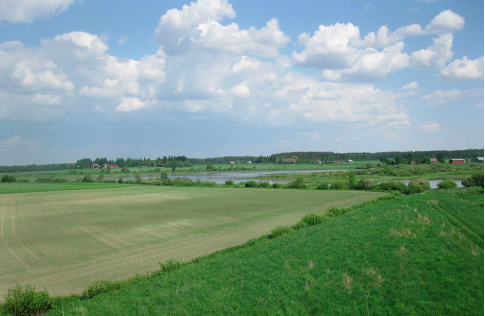
二、自然地理
1.地理条件
Kankaanpää is located in the northern part of Satakunta County and is partly bordered by Pirkanmaa Province. The terrain at Kankaanpää is mostly quite low and the height differences are small. However, the eastern part is dominated by a clearly higher ridge section formed by Hämeenkangas and Pohjankangas. Hämeenkangas reaches a height of almost 140 meters above sea level. The highest point of Pohjankangas in the Kankaanpää area is the Pukkiharston ridge, which reaches a height of 152 meters, in the middle of the shooting range. There are extensive bogs on both sides of the ridge section, some of which are used as peat production areas. The bogs are mainly of the so-called cream oases characterized by a convex central part and alternating dry marshy and watery parts. The edges of the bogs are swamps and ravens that gradually turn into forests.
The ridge section also forms a significant watershed. From its western side, the waters partly flow directly into the Karvianjoki River, some bypass Lavia through Karhijärvi. From the eastern part of the ridge, the waters flow through Jämijärvi to Kyrösjärvi and further through Siuro to Kulovesi and Kokemäenjoki. The most notable lakes in Kankaanpää are Venesjärvi, Ruokojärvi, Verttuunjärvi and Valkiajärvi.
2.交通情况
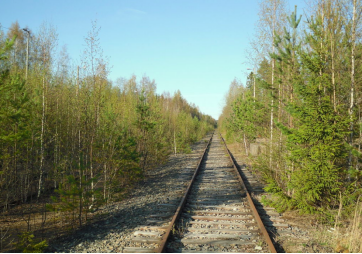
Old and abandoned track at Kankaanpää railway station.
Highway 23 from Pori via Parkano to Jyväskylä and main road 44 from Sastamala to Kauhajoki intersect outside the center of Kankaanpää. Regional road 261 from Niinisalo to Ikaalinen is also important for traffic, where it is connected to highway 3 leading to Tampere. The road from Parkano to Pori was built in 1823 (now Highway 23). The distance from Kankaanpää is 52 kilometers to Pori and 90 kilometers to Tampere.
In ancient times (from about 1600) the important Kyrönkangas road from Häme to Ostrobothnia passed through Kankaanpää. The road still exists and is mostly free to drive in Hämeenkangas. Instead, in Pohjankangas, the road passes partly on the shooting range. Kyrönkankaantie from Hämeenkyrö to Kauhajoki is an old highway, which has been one of the main roads in the country and at one time the only connection from Hämeenlinna to Vaasa during the summer. The road has served as both a postal road and a war road during the club war, the Great Wrath and the Finnish Wars. Originally, the fairway was created in the Middle Ages in connection with land transport of batches. Even then, it must have traveled at about the same point as where we meet it in its oldest maps from the 1650s.
The Pori – Haapamäki railway, which was completed in 1938, also passes through Kankaanpää, but its importance decreased significantly after the completion of the new Tampere – Seinäjoki line in the early 1970s. The Kankaanpää railway station station building, designed by architect Thure Hellström, was completed in 1933, when train traffic from Pori to Kankaanpää began, and according to the same drawings, Parkano (now Kairokoski) (1934) and Virtain railway stations (1936) were built on the same section. In addition to the Kankaanpää and Niinisalo stations, the Veneskoski and Hapuoja stops were located in the Kankaanpää area. Passenger train traffic on the line was discontinued in 1981 and the line section between Kankaanpää and Pori was completely decommissioned in 1985. Maintenance of the line section between Kankaanpää and Niinisalo was stopped in 2001. There are occasional military transports on the line between Niinisalo and Parkano. Today, the nearest passenger railway station is located on the Tampere – Seinäjoki line in Parkano.
三、经济发展和规模
The city of Kankaanpää is involved in the generation and ownership change counseling carried out by Satakunta Entrepreneurs.
The counseling provides guidance on the company's sales and purchase planning, preparation for generational change and business start-ups. The service is free of charge and is intended for entrepreneurs for whom it is topical to find a business successor within five years, as well as for those interested in buying a company and starting a business.
The service maps the company's situation and tells you e.g. the basic rules of taxation and valuation related to the exchange and the client is directed to an expert who supports further measures. The service does not include a precise change of ownership or generation plan, valuation, making deeds of sale or agent service in trade or other negotiations.
https://www.kankaanpaa.fi/tyo-ja-yrittaminen/elinkeinopalvelut/aluekehitys/
四、产业特点/重点项目
Business Services surveys the business situation in the Kankaanpää business field and identifies areas for development. We collect information on the development needs and future plans of companies based on fabric and, if necessary, direct development blanks for further processing to partners. ProAgria Western Finland offers free business advice to small entrepreneurs in Satakunta's rural areas. ProAgria's Business Advisors assist in information retrieval, identify funding opportunities, and assess the feasibility and risks of plans. We work in close cooperation with ProAgria's business advisors in Western Finland.
Leader-Pohjois-Satakunta is a major player in developing the activities of companies and associations in our region. Through the association, it is possible to apply for e.g. the following funding:
Investment aid - for investments required to start, expand and develop a business.
Feasibility study support - support for feasibility study expert services for those planning material investments.
Start-up aid - for the start - up of a start - up entrepreneur 's first business or for a start - up
Enterprise group development support - for 3-10 companies for a collaborative development or training project. The project may include both joint and company-specific development measures.
Satakunta ELY Center
The Satakunta ELY Center enables the financing of various development measures for companies, such as:
Business development grant - for SME development measures and investments when a company starts up, invests in renewal or seeks to grow. A special focus is on the internationalization of companies. Business Development Services - business analysis, consulting and training services for companies looking to grow their business.
Finnvera offers financing for business start-ups, growth and internationalization, as well as for hedging against export risks. Finnvera strengthens the operating conditions and competitiveness of companies by offering loans, guarantees and export guarantees. Finnvera shares the risk involved in financing with other financiers.
Our other regional development partners
https://www.kankaanpaa.fi/tyo-ja-yrittaminen/elinkeinopalvelut/omistajanvaihdos/
五、风景名胜,景点( attractions)
1. Kankaanpää City Museum
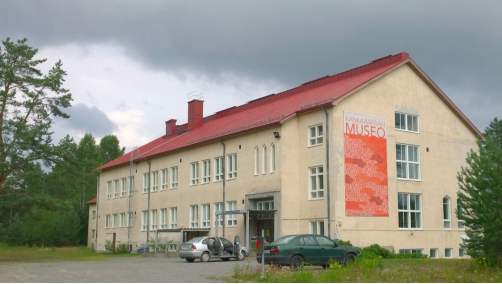
The Kankaanpää City Museum is located on the premises of the former primary school in Niinisalo. In addition to the cultural history department, the museum includes the Sinikka and Kauko Räikke art collection and the Niinisalo department, which tells the history of the garrison.
In 1977, the city of Kankaanpää decided to place the museum in the premises of the Niinisalo Western Primary School, where a national specialty artillery museum, the Artillery Museum, was established in the same year. In 1997, the Artillery Museum was moved to a more central location in Hämeenlinna. A garrison department of the City Museum was established in the premises vacated by the Artillery Museum, which displays, among other things, the Niinisalo boarding school, a boarding school for war veterans who had dropped out of school due to the war, operating in 1945–1947. The average age of the students was 25 years and the oldest student was 36 years old.
At the same time as the removal of the Artillery Museum, Professor Kauko Räike and artist Sinikka Räike handed over almost all of their production to the city of Kankaanpää. It was decided to place the art collection in the city museum.
2.Kankaanpää Church
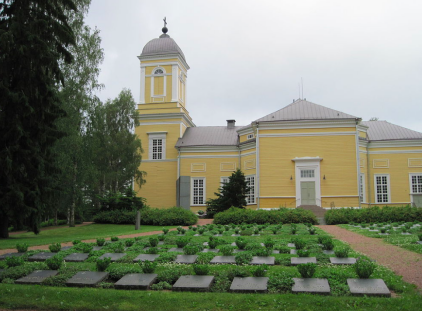
Kankaanpää Church is an end-tower, wooden and internally chamfered cruciform church in Kankaanpää, consecrated in 1839. The church represents neoclassicism in its style. The church was designed by the German architect Carl Ludvig Engel. There are about 1,000 seats in the church. The church's cross center has an attic-like elevation covered by a flat tent roof. The intersection has a dome. The end tower, which represents neoclassicism, is domed. Felix Frang painted the church's altarpiece entitled The Transfiguration of Christ in 1922. In 1938–1939, Urho Lehtinen painted paintings on the walls of the church hall. The organ was made by Hans Heinrich. The organ has 40 voices.
The church is one of the largest wooden churches in Satakunta, and it is located on a church hill, visible far behind Lake Ruokojärvi. The 24-meter church tower can also be seen with binoculars from the observation tower of Lauhanvuori National Park, located on the border of the Isojoki and Kauhajoki rivers. Kankaanpää Church is located at Keskuskatu 64.
3. Niinisalo garrison
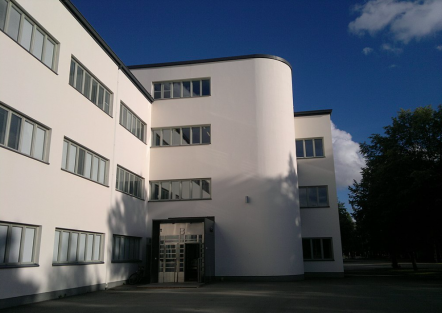
The Niinisalo garrison is a garrison operating in the village of Niinisalo in Kankaanpää, where the Niinisalo branch of the Artillery Brigade and now the Pori Brigade operated. Until the end of 2012, the garrison also included the Experimental Shooting Department as an independent unit. A garrison club operates in connection with the garrison. The garrison is Kankaanpää's second largest employer after the city. The garrison also includes a military home that has been operating since the mid-1940s, as well as the Falkonetti garrison restaurant (formerly the Catering Center) under Leijona Catering Oy and the Artillery School, now part of the Maasotakoulu.
The test shooting facility was closed at the end of 2012 and became the administrative unit of the new Defense Forces Explosives Center (NII / RÄJK). Until the end of 2013, the garrison was staffed by the Satakunta Military Orchestra. At the beginning of 2015, the Artillery Brigade operating in the garrison was merged into the Pori Brigade.
六、历史文化
1.历史
Several Stone Age, but few Bronze and Iron Age artefacts have been found in various parts of Kankaanpää. On the other hand, no permanent prehistoric residences have been found. Permanent settlement in the area arose from the east in the 16th century, when a dozen new houses were formed. In the next century, the settlement did not increase, but in the 18th century it began to increase rapidly, as happened elsewhere in North Satakunta. In 1805, Kankaanpää had a population of 2,028 people, and by 1850 it had more than doubled, 4,568 people.
Kankaanpää used to belong (see Kyrö parish) to Ikaalinen, to which it was formed as a parish in 1737. Kankaanpää became its own parish in 1841, and Hongonjoki (now Honkajoki) and Karvia were later separated from it. In the 1930s, the construction of a railway and the establishment of a garrison in Kankaanpää contributed to the rise of Kankaanpää as a versatile service center in its region. [13] Kankaanpää became a township in 1967 and a town in 1972. Kankaanpää was part of the ancient keeper of Kyrö before Ikaalinen Kyrö seceded in the 1640s. The center of Kyrö was Hämeenkyrö-Viljakkala. Kankaanpää belongs to the dialect area of Ylä-Satakunta, which belongs to the dialects of Häme. During the Civil War, the headquarters of the white Satakunta front and the headquarters of the Pori regiment were located in Kankaanpää. However, there were no significant battles in the municipality. After the last wars, the Hiitola migrants were settled in Kankaanpää.
Kankaanpää has previously explored the possibility of a municipal alliance with Parkano and Jämijärvi. The planned connection would have meant the transfer of Kankaanpää from the province of Satakunta to the province of Pirkanmaa. These three municipalities have been part of Ikaalinen's mother manager, Ikaalinen Kyrö. In November 2011, an opinion poll on the municipal association was held in Kankaanpää, Jämijärvi and Parkano. The response rate was 32% in Kankaanpää. About 60% of the respondents opposed, 20% supported and 20% could not say their position. Different positions have been presented on the outcome. The settlement report lapsed after Parkano withdrew from the project. Since then, two studies have been conducted: more broadly between the current North Satakunta and bilaterally between Lavia. Both projects failed so far. Lavia was under the compulsory annexation of the Crisis Act on economic grounds and was annexed to Pori by a decision of the Government.
2. 文化体育
In Kankaanpää, the primary school system was introduced at the beginning of the autumn semester in 1974. There are six primary schools in the city, including a special school and one secondary school. High school education is provided by the Kankaanpää joint school and vocational education is provided by Sataedu Kankaanpää.
It is also possible to complete university studies in Kankaanpää. Artists have graduated from the traditional Kankaanpää Art School, or SAMK Fine Arts Kankaanpää unit, for more than fifty years. At present, SAMK can be used to graduate for both bachelor's and master's degrees. Kankaanpää College has a very diverse educational offer as well as various study opportunities. Study can take place full-time, in addition to work, with an apprenticeship or by completing a demonstration degree. Cooperation with the universities of Eastern Finland, Jyväskylä and Turku also enables the completion of open university courses at Kankaanpää College.
Kankaanpää Music College is an educational institution founded in 1965 and maintained by the City of Kankaanpää, which provides basic art education in accordance with the extensive curriculum in music in eight municipalities (Honkajoki, Jämijärvi, Kankaanpää, Karvia, Pori, Merikarvia, Pomarkku and Siikainen). Citizens' College activities are carried out by Petäjä College, which is a regional civic college in the municipalities of Honkajoki, Kankaanpää, Karvia, Kihniö, Parkano and Pomarkku.
The traditional type of cloth head is baseball. The local men's club is known as Kankaanpää Maila or KaMa. The women's baseball team is called the Hostesses. Other clubs from Kankaanpää are Kankaanpää Swimmers, Kankaanpää Orientators, Kankaanpää Regional Leisku and Kankaanpää Athletes, Kankaanpää Gymnasts, Kankaanpää Polar Bears, Kankaanpää Ball and Kankaanpää Shooting Athletes. More associations are listed by hobby on the city’s website.
七、其他信息
Based on the village of Niinisalo about 5.7 km northeast of the site the climate is a continental subtarctic frontier (Köppen: Dfc) considering that the warmest fourth month is around 9°C, which puts Kankaanpää in a humid continental climate (Dfb) being closer to Helsinki than Oulu, it also means that summer is more consistent and warm but winters are still cold. The municipality is considered one of the rainiest of Finland with 571 mm only during a growing season in 1995. Being the growing season from early May to October 10.
八、联系方式
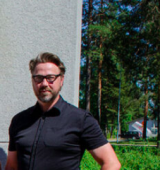
Town manager: Mika Hatanpää
Phone: +358445772218
Email: vkankaanpaan.kaupunki@kankaanpaa.fi
Address: Kuninkaanlähteenkatu 12, 38700 Kankaanpää
